It might be frustrating to have thinning hair, especially when it begins around the temples and basic tasks like tying the hair in a bun become problematic. Temple hair loss in women is common, and coping with it might not be easy. Recognizing hair loss and its reasons can help you find a remedy. Continue reading to learn what triggers hair loss at the temples and how to restore temple hair effectively.
In This Article
What Is Temple Hair Loss?
Temple hair loss is the thinning of hair at the temples. Although this kind of hair loss is common in both men and women, it is characteristic of male pattern baldness, where thinning starts at the temples rather than from the top of the head (1). However, if you are losing hair at the temples, it is likely that you are losing hair from the top of your head as well (2). Temple hair loss can also just take place on just one side.
What Causes Temple Hair Loss?
More often than not, hair loss at the temples is a genetically inherited condition like male and female pattern baldness. In some cases, it is also caused due to the overuse of hair extensions and sporting tight braids and hairstyles. Thyroid conditions and hormonal imbalances caused due to issues such as PCOS can lead to this kind of hair loss (3), (4).
In the next section, we will take a look at the methods you can use to help regrow the hair on the temples.
Note: These remedies alone will not control hair thinning. A proper diagnosis needs to be done by a doctor to find out the underlying cause of hair loss.
How To Treat Hair Loss At The Temples Naturally
1. Olive Oil
Research shows that massaging the scalp with oil can increase hair thickness (5). Since olive oil can penetrate the hair shaft, massaging your hair and scalp with it can help strengthen them from within (6). A study showed that a herbal formulation with an olive oil base induced hair growth (7). Olive oil also contains oleuropein that could induce hair growth in mice studies (8). However, there is no concrete evidence to suggest that olive oil can actually promote hair growth.
You Will Need
2 tablespoons of olive oil
Processing Time
45 minutes
Process
- Heat the olive oil for a couple of seconds until it is slightly warm.
- Massage the oil into your scalp for about 15 minutes, focusing on the temples.
- Once your scalp is fully covered, work the rest of the oil through your hair.
- Leave the oil on for an additional 30 minutes.
- Wash off with a mild sulfate-free shampoo and cool/lukewarm water.
How Often?
2-3 times a week.
2. Aloe Vera
Aloe vera has anti-inflammatory and moisturizing properties (9). It can not only soothe scalp irritation but also moisturize your scalp and hair. It can also help reduce dandruff (10). This, in turn, may reduce hair loss. Though aloe vera is traditionally used to address hair loss issues, there is a lack of scientific evidence to establish the link.
You Will Need
1 teaspoon of aloe vera gel
Processing Time
1 hour
Process
- Extract about a teaspoon of fresh aloe vera gel. If you do not have fresh aloe vera, you can use store-bought pure aloe vera gel.
- Apply the gel to the affected areas and leave it on for about an hour.
- You can rinse it off with water or a mild sulfate-free shampoo. Be sure not to shampoo your hair more than 3 times a week.
How Often?
3-4 times.
3. Onions
A study showed that onion juice could induce hair growth (11). Another study states that onion has a high sulfur content, which can help in regenerating hair follicles and stimulating hair growth (12).
You Will Need
1 teaspoon of extracted onion juice
Processing Time
15 minutes
Process
- Extract the juice from the onion and apply this to your temples and the other affected areas on your scalp.
- Leave the onion juice on for 15 minutes.
- Wash off with a mild sulfate-free shampoo and cool/lukewarm water.
How Often?
2-3 times a week.
4. Green Tea
Studies show that the EGCG (epigallocatechin gallate) in green tea can stimulate hair growth (13). It also inhibits the activity of the 5α-reductase enzyme, which can cause hair loss (14). Green tea can also help reduce sebum production on greasy scalps (15). It can help improve overall scalp and hair health.
You Will Need
- 2 bags of green tea
- 1 cup of water
Processing Time
30 minutes
Process
- Brew a cup of tea with two bags of green tea and set it aside to cool.
- Apply it to your scalp and hair. Make sure to cover your temple and the affected areas on your scalp.
- Leave the tea in for 30 minutes and then rinse it out with a mild sulfate-free shampoo.
How Often?
2-3 times a week.
5. Potato Rinse
There is no scientific evidence of potato juice curbing hair loss. Research shows that potato juice has antioxidant properties (16). This can help reduce oxidative stress, which is a common cause of hair fall (17).
You Will Need
- 2 potatoes
- 2 cups of water
Processing Time
5 minutes
Process
- Boil two medium-sized potatoes and collect the water in a jug. Set it aside to cool.
- Wash and condition your hair as you normally would.
- Pour the cooled potato liquid through your hair as a final rinse.
How Often?
2-3 times a week.
6. Coconut Oil
Coconut oil contains fatty acids that penetrate through your scalp and hair, nourishing and conditioning them (18). It also reduces protein loss of hair, which is needed for healthy hair.
You Will Need
2 tablespoons of coconut oil
Processing Time
45 minutes
Process
- Heat the coconut oil for a couple of seconds until it is slightly warm.
- Massage the oil into your scalp for about 15 minutes, focusing on the temples.
- Once your scalp is fully covered, work the rest of the oil through your hair.
- Leave the oil on for an additional 30 minutes.
- Wash off with a mild sulfate-free shampoo and cool/lukewarm water.
How Often?
2-3 times a week.
7. Honey, Cinnamon, And Olive Oil
Cinnamon contains procyanidins, which induced hair growth in mice studies (19). Olive oil can help hydrate the hair and condition it. Honey is an emollient, which makes it a good hair conditioner (20). It can also help treat dandruff and regulate the pH of the scalp.
You Will Need
- 1 tablespoon of cinnamon
- 1 tablespoon of honey
- 2 tablespoons of olive oil
Processing Time
40 minutes
Process
- Combine all the ingredients in a bowl to get a smooth mixture.
- Apply this mixture to your scalp and hair.
- Once your scalp and hair are covered, leave the hair mask on for 40 minutes.
- Wash it off with a mild sulfate-free shampoo and cool/lukewarm water.
How Often?
2 times a week.
8. Neem Leaves
Studies showed that the antifungal properties of neem extracts could inhibit the growth of dandruff-causing fungi (21). It has immune-boosting, anti-inflammatory, and antimicrobial properties (22). These properties can help in keeping the scalp and hair healthy. Anecdotal evidence suggests that neem can aid hair regrowth and reduce hair loss. It can also help rejuvenate dry and frizzy hair. However, there are no scientific studies to prove these effects.
You Will Need
- A bunch of neem leaves
- A few tablespoons of water
Processing Time
15 minutes
Process
- Blend a handful of neem leaves to get a smooth paste. You can add some water to the paste to get it to the right consistency.
- Apply the neem paste to your temples and the affected areas of your scalp.
- Leave it on for 15 minutes and then rinse it out with cool/lukewarm water.
How Often?
4-5 days a week.
Temple hair loss can be frustrating, especially when you are tying your hair. Seen in both men and women, multiple factors such as genetics, medical conditions, and overuse of hair extensions can lead to your hair thinning at the temples. You can try home remedies with natural ingredients such as olive oil, green tea, aloe vera, coconut oil, or neem leaves to combat temple hair loss. However, it is advisable to consult your doctor to identify the cause behind it and avail the correct treatment.
Frequently Asked Questions
How can I thicken hair at my temples?
You can use the natural remedies mentioned in the article to make the hair at your temples thicker. You can also seek other hair care treatments and medication to increase hair growth and make hair thicker, but be sure to consult a trichologist first to diagnose the reason for hair loss. If the cause is a nutrient deficiency, supplements might do the trick. But if it is a hair loss issue, the doctor might recommend prescribed medication and other treatments like hair transplantation.
How do you hide thinning hair in temples?
You can use hair extensions like clip-on or sew-in weaves to make your hair look thicker and hide hair thinning. You can also use hair coloring sprays or fillers that coat your hair and scalp and give the appearance of fuller hair.
What vitamin deficiency causes hair fall?
A lack of nutrients like vitamins, proteins, amino acids, and minerals can lead to hair loss and thinning. Deficiency of vitamins D, B12, and folic acid may be linked to hair loss.
Does finasteride work on temples?
Finasteride is an FDA-approved prescription drug used for treating androgenic alopecia. The drug may help reduce the risk of female pattern hair loss in women and male pattern hair loss in men, which is a common cause for receding hair at the temples.
Sources
Articles on StyleCraze are backed by verified information from peer-reviewed and academic research papers, reputed organizations, research institutions, and medical associations to ensure accuracy and relevance. Check out our editorial policy for further details.
-
- Rathnayake, Deepani, and Rodney Sinclair. “Male androgenetic alopecia.” Expert opinion on pharmacotherapy 11.8 (2010): 1295-1304.
https://www.tandfonline.com/doi/full/10.1517/14656561003752730 - Gupta, Mrinal, and Venkataram Mysore. “Classifications of Patterned Hair Loss: A Review.” Journal of cutaneous and aesthetic surgery vol. 9,1 (2016): 3-12.
https://www.ncbi.nlm.nih.gov/pmc/articles/PMC4812885/ - Mulinari-Brenner, Fabiane, and Wilma F. Bergfeld. “Hair loss: an overview.” Dermatology nursing 13.4 (2001): 269.
https://www.researchgate.net/publication/11446462_Hair_loss_An_overview - Vincent, Maya, and Krishnan Yogiraj. “A Descriptive Study of Alopecia Patterns and their Relation to Thyroid Dysfunction.” International journal of trichology vol. 5,1 (2013): 57-60.
https://www.ncbi.nlm.nih.gov/pmc/articles/PMC3746235/ - Koyama, Taro et al. “Standardized Scalp Massage Results in Increased Hair Thickness by Inducing Stretching Forces to Dermal Papilla Cells in the Subcutaneous Tissue.” Eplasty vol. 16 e8. 25 Jan. 2016
https://www.ncbi.nlm.nih.gov/pmc/articles/PMC4740347/ - Keis, K et al. “Investigation of penetration abilities of various oils into human hair fibers.” Journal of cosmetic science vol. 56,5 (2005): 283-95.
https://pubmed.ncbi.nlm.nih.gov/16258695/ - Banerjee, Pooja S., et al. “Preparation, Evaluation and Hair Growth Stimulating Activity of Herbal Hair Oil .” Journal of Chemical and Pharmaceutical Research, 2009, 1(1): 261-267.
http://www.jocpr.com/articles/preparation-evaluation-and-hair-growth-stimulating-activity-of-herbal-hair-oil.pdf - Tong, Tao et al. “Topical Application of Oleuropein Induces Anagen Hair Growth in Telogen Mouse Skin.” PloS one vol. 10,6 e0129578.
https://www.ncbi.nlm.nih.gov/pmc/articles/PMC4462586/ - Surjushe, Amar et al. “Aloe vera: a short review.” Indian journal of dermatology vol. 53,4 (2008): 163-6.
https://www.ncbi.nlm.nih.gov/pmc/articles/PMC2763764/ - Vardy, D. A., et al. “A double-blind, placebo-controlled trial of an Aloe vera (A. barbadensis) emulsion in the treatment of seborrheic dermatitis.” Journal of dermatological treatment 10.1 (1999): 7-11.
https://www.tandfonline.com/doi/abs/10.3109/09546639909055904 - Sharquie, Khalifa E., and Hala K. Al‐Obaidi. “Onion juice (Allium cepa L.), a new topical treatment for alopecia areata.” The Journal of dermatology 29.6 (2002): 343-346.
https://www.researchgate.net/publication/11253462_Onion_Juice_Allium_cepa_L_A_New_Topical_Treatment_for_Alopecia_Areata - Hajare, R. A. “Onion juice: An effective home remedy for combating alopecia.” IJPRD 4 (2015): 93-7.
https://www.researchgate.net/publication/273758703_Onion_Juice_An_Effective_Home_Remedy_for_Combating_Alopecia - Kwon, O S et al. “Human hair growth enhancement in vitro by green tea epigallocatechin-3-gallate (EGCG).” Phytomedicine : international journal of phytotherapy and phytopharmacology vol. 14,7-8 (2007): 551-5.
https://pubmed.ncbi.nlm.nih.gov/17092697/ - Hiipakka, Richard A., et al. “Structure–activity relationships for inhibition of human 5α-reductases by polyphenols.” Biochemical pharmacology 63.6 (2002): 1165-1176.
https://www.sciencedirect.com/science/article/abs/pii/S0006295202008481 - Nualsri, Chanchanok et al. “Development and clinical evaluation of green tea hair tonic for greasy scalp treatment.” Journal of cosmetic science vol. 67,3 (2016): 161-66.
https://pubmed.ncbi.nlm.nih.gov/29394016/ - Kowalczewski, Przemysław et al. “Antioxidant activity of potato juice.” Acta scientiarum polonorum. Technologia alimentaria vol. 11,2 (2012): 175-81.
https://pubmed.ncbi.nlm.nih.gov/22493159/ - Trüeb, Ralph M. “Oxidative stress in ageing of hair.” International journal of trichology vol. 1,1 (2009): 6-14. doi:10.4103/0974-7753.51923
https://pubmed.ncbi.nlm.nih.gov/20805969/ - Rele, Aarti S, and R B Mohile. “Effect of mineral oil, sunflower oil, and coconut oil on prevention of hair damage.” Journal of cosmetic science vol. 54,2 (2003): 175-92.
https://pubmed.ncbi.nlm.nih.gov/12715094/ - Hosking, Anna-Marie, Margit Juhasz, and Natasha Atanaskova Mesinkovska. “Complementary and Alternative Treatments for Alopecia: A Comprehensive Review.” Skin appendage disorders 5.2 (2019): 72-89.
https://www.karger.com/Article/FullText/492035 - Burlando, Bruno, and Laura Cornara. “Honey in dermatology and skin care: a review.” Journal of cosmetic dermatology vol. 12,4 (2013): 306-13.
https://pubmed.ncbi.nlm.nih.gov/24305429/ - Niharika, Anand, Johnson M. Aquicio, and Arulsamy Anand. “Antifungal properties of neem (Azadirachta indica) leaves extract to treat hair dandruff.” E-ISRJ 2 (2010): 244-52.
https://www.researchgate.net/publication/333671637_ANTIFUNGAL_PROPERTIES_OF_NEEM_AZARDIRACHTA_INDICA_LEAVES_EXTRACT_TO_TREAT_HAIR_DANDRUFF - A., Mohammad. “Therapeutics Role of Azadirachta Indica (Neem) and Their Active Constituents in Diseases Prevention and Treatment.” Evidence-Based Complementary and Alternative Medicine (2016).
https://www.hindawi.com/journals/ecam/2016/7382506/
- Rathnayake, Deepani, and Rodney Sinclair. “Male androgenetic alopecia.” Expert opinion on pharmacotherapy 11.8 (2010): 1295-1304.
Related
The following two tabs change content below.
- Author
- Reviewer
Anjali Sayee
Anjali specializes in hairstyles and hair and skin care and has written over 200 articles in these domains. Her philosophy… more
Dr. CP Thajudheen
(MD)Dr. CP Thajudheen has over 20 years of experience in various lasers, light-based devices, and other advanced equipment. He was… more



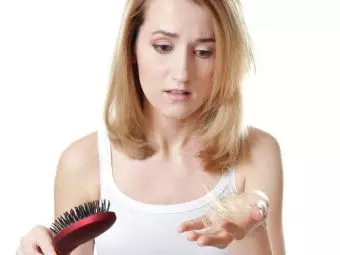 How To Combat Thyroid Induced Hair Loss Using Home Remedies
How To Combat Thyroid Induced Hair Loss Using Home Remedies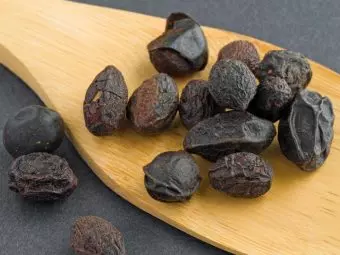 Saw Palmetto For Hair Loss: Side Effects And Precautions
Saw Palmetto For Hair Loss: Side Effects And Precautions What Are The Main Causes Of Hair Loss In Children?
What Are The Main Causes Of Hair Loss In Children? 7 Best Yoga Poses That Boost Hair Growth And Thickness
7 Best Yoga Poses That Boost Hair Growth And Thickness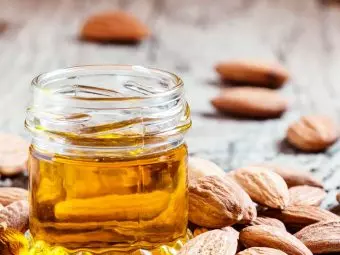 How To Use Almond Oil To Help Control Hair Loss
How To Use Almond Oil To Help Control Hair Loss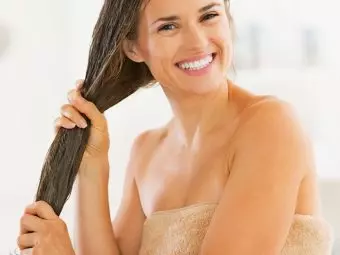 15 Effective Hair Masks To Treat Hair Loss
15 Effective Hair Masks To Treat Hair Loss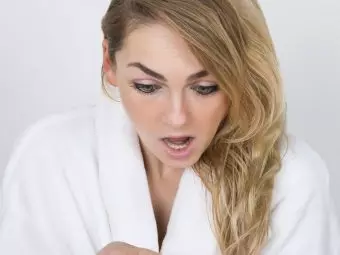 6 Best Vitamins For Hair Fall Control – Do They Really Work?
6 Best Vitamins For Hair Fall Control – Do They Really Work?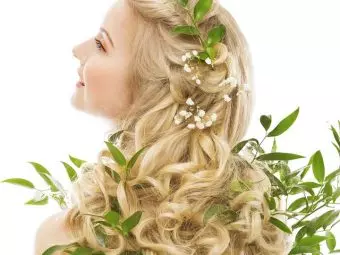 20 Herbs For Hair Loss That Stimulate Hair Growth
20 Herbs For Hair Loss That Stimulate Hair Growth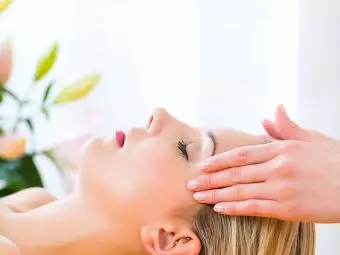 How To Get Rid Of Hair Fall The Natural Way With Acupressure
How To Get Rid Of Hair Fall The Natural Way With Acupressure